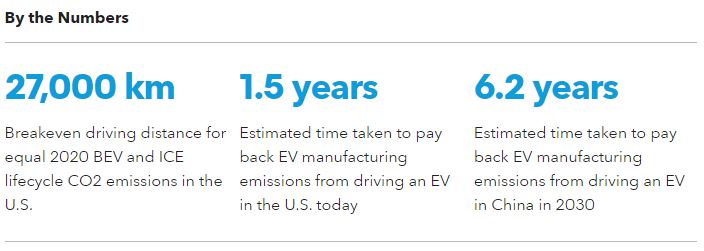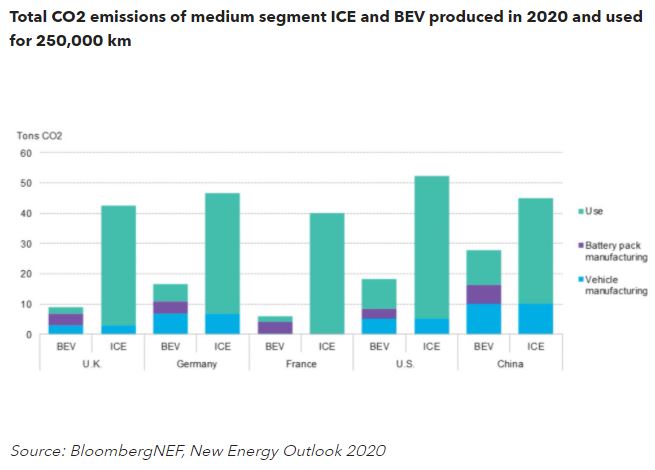Electric vehicles have zero tailpipe emissions, but still have associated emissions from manufacturing and usage. Regulatory agencies in some countries are considering the possibility of using lifecycle CO2 emissions for battery electric (BEV) and internal combustion engine (ICE) vehicles. We present estimates for usage and lifecycle emissions of BEVs and ICEs to 2040 for the U.S., China, the U.K., Germany and France.


The lifecycle CO2 emissions of medium segment battery electric cars produced in 2020 and used for 250,000 km would be between 18% and 87% lower than those of equivalent internal combustion engine vehicles in the five countries included in this report. The breakeven point is far sooner in France at 25,000 km, compared to 153,000 km in China. By 2030, all countries will see this emissions breakeven point occur far earlier.
The manufacturing emissions of BEVs depend directly on the location of battery cell production and material refining. Importing EVs from China would increase the BEV-ICE CO2 emissions breakeven distance by 60% to 80% in 2020 and could more than double it by 2030, depending on the country. Carbon dioxide emissions from battery manufacturing in China are around 60% to 85% higher than those in Europe and the U.S. By 2030, this emissions gap increases even further.
Battery electric vehicles emit less CO2 than their ICE counterparts when in use, as the electricity system decarbonizes much quicker than the combustion engine improves. The gap will only increase between 2020 and 2040, other than in France where grid emissions increase slightly over this period.